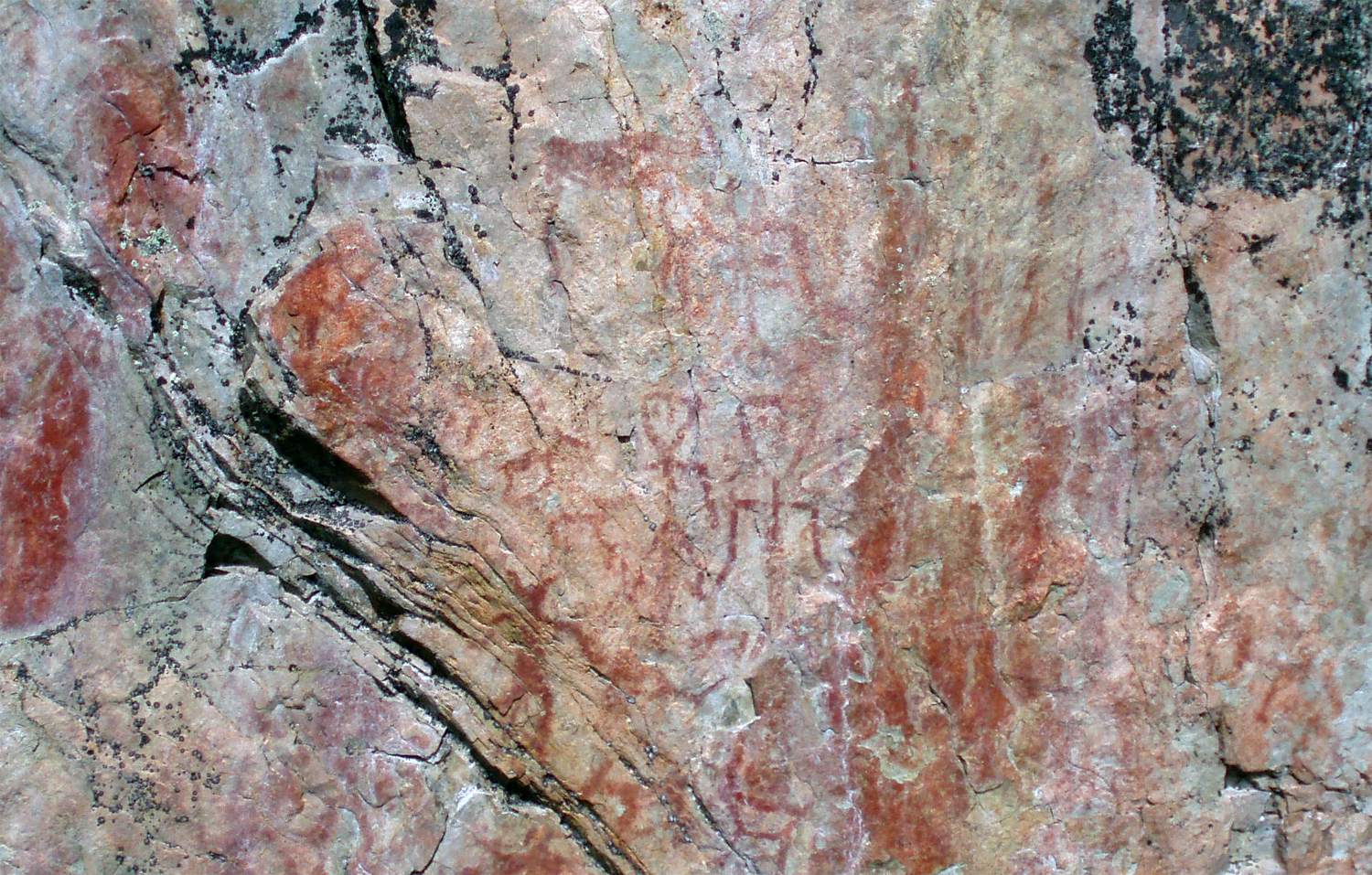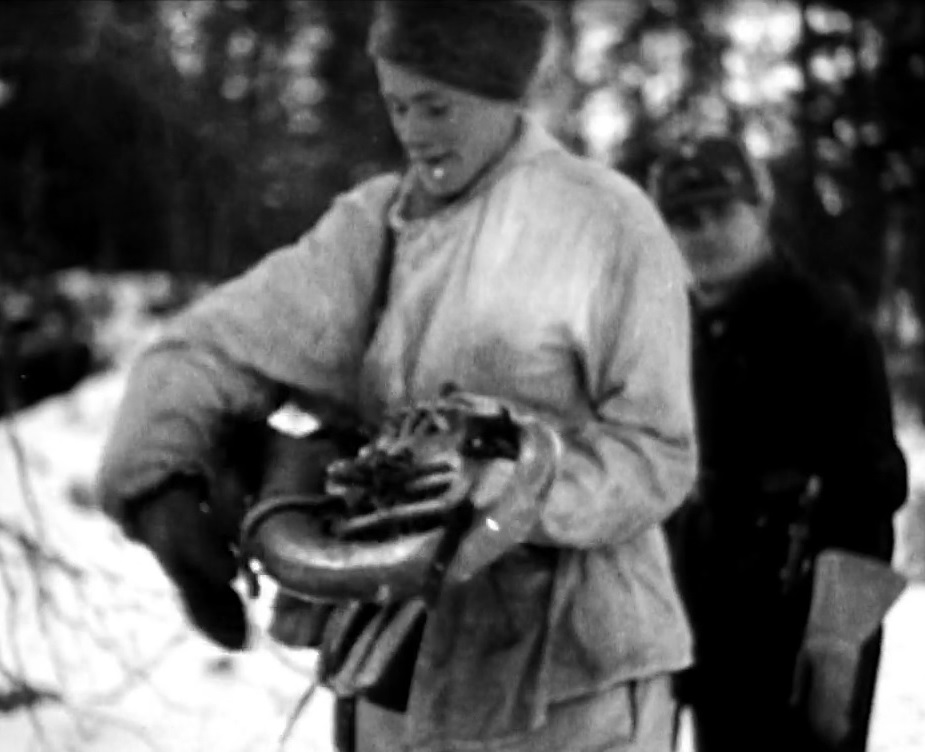|
Suomussalmi
Suomussalmi () is a municipality in Finland located in the Kainuu region about northeast of Kajaani, the capital of Kainuu and south of Kuusamo. The municipality has a population of () and covers an area of of which is water. The population density is . The municipality is unilingually Finnish. Ämmänsaari is the biggest built-up area in the municipality. Suomussalmi is the second southernmost part of the reindeer-herding area in Finland. History During the Winter War of 1939–40, several battles were fought in the area around Suomussalmi, the most important ones being the Battle of Suomussalmi and the Battle of Raate Road. In these battles, Finnish forces defeated numerically superior Soviet forces. Suomussalmi hosted the 2016 World Berry Picking Championship. Villages * Alajärvi * Ala-Vuokki * Hossa * Jumaliskylä * Juntusranta * Kaljuskylä * Kerälä * Kiannanniemi * Korpela * Korvua * Kuivajärvi * Kurimo * Lomakylä * Myllylahti * Näljänkä * Näätälä * Pe ... [...More Info...] [...Related Items...] OR: [Wikipedia] [Google] [Baidu] |
Kainuu
Kainuu (), also historically known as Cajania (), is one of the 19 regions of Finland (''maakunta'' / ''landskap''). Kainuu borders the regions of North Ostrobothnia, North Savo and North Karelia. In the east, it also borders Russia (Republic of Karelia). Culturally Kainuu is part of larger Eastern-Finnish cultural heritage. The dialect of Kainuu resembles Savonian and Karelian dialects. Geography Boreal forest makes up most of the biome in Kainuu. The forest in Kainuu mostly consists of birches, pines and spruces. The atypical regional geography and landscape consist of lakes, hills and vast uninhabited forest areas. The largest lake in the region is the Oulujärvi (928.09 km2), one of the largest lakes in Finland. Its shorelines, open waters and islands in Kainuu belong to the municipalities of Paltamo and Kajaani. The highest point in Kainuu is the Iso Tuomivaara (385 m), located in the municipality of Hyrynsalmi. The regional climate is continental. The three mos ... [...More Info...] [...Related Items...] OR: [Wikipedia] [Google] [Baidu] |
Battle Of Suomussalmi
The Battle of Suomussalmi was fought between Finnish and Soviet forces in the Winter War. The action took place from 30 November 1939 to 8 January 1940. The outcome was a Finnish victory against superior forces. This battle is considered the clearest, most important, and most significant Finnish victory in the northern half of Finland. In Finland, the battle is still seen today as a symbol of the entirety of the Winter War itself. Order of Battle Soviet army 9th Army * 163rd Rifle Division * Parts of 47th Rifle Corps * 44th Rifle Division Finish army North Finland Group * Susi Group (Ryhmä Susi) * Siilasvuo Group * 9th Infantry Division Course of battle On 30 November 1939, Zelentsov leading the Soviet 163rd Rifle Division (the 81st and Sharov's 662nd Infantry Regiments with tanks and cavalry) left Ukhta and crossed the border near Juntusranta, while the 759th Infantry Regiment and Division reconnaissance battalion crossed at Raate, as the Soviets advanced towards Suom ... [...More Info...] [...Related Items...] OR: [Wikipedia] [Google] [Baidu] |
Battle Of Raate
The Battle of Raate Road () was fought during the Winter War between the Soviet Union and Finland in January 1940, as a part of the Battle of Suomussalmi. On December 7, 1939, the Soviet 163rd Rifle Division captured Suomussalmi, but found itself trapped deep inside Finnish territory, and the Soviet 44th Rifle Division was sent to aid the 163rd. Over the next week, Colonel Hjalmar Siilasvuo's outnumbered 9th Division stopped and decisively defeated the Soviet forces on the Raate-Suomussalmi road. Background During the Battle of Suomussalmi, the Finns cut the Raate Road on December 11, 1939. The action blocked the second, southern supply route to the Soviet 163rd Rifle Division in the town of Suomussalmi. Kulju 2007, p. 81 The Finns also cut the first, northern supply route on 13 December, and the Soviets were forced to open a new supply route through Lake Kiantajärvi. Kulju 2007, pp. 82–83 The 163rd Division was nearly surrounded and suffered major casualties in Suomussal ... [...More Info...] [...Related Items...] OR: [Wikipedia] [Google] [Baidu] |
Battle Of Raate Road
The Battle of Raate Road () was fought during the Winter War between the Soviet Union and Finland in January 1940, as a part of the Battle of Suomussalmi. On December 7, 1939, the Soviet 163rd Rifle Division captured Suomussalmi, but found itself trapped deep inside Finnish territory, and the 44th Rifle Division (Soviet Union), Soviet 44th Rifle Division was sent to aid the 163rd. Over the next week, Colonel Hjalmar Siilasvuo's outnumbered 9th Division stopped and decisively defeated the Soviet forces on the Raate-Suomussalmi road. Background During the Battle of Suomussalmi, the Finns cut the Raate Road on December 11, 1939. The action blocked the second, southern supply route to the Soviet 163rd Rifle Division in the town of Suomussalmi.#Kulju2007, Kulju 2007, p. 81 The Finns also cut the first, northern supply route on 13 December, and the Soviets were forced to open a new supply route through Kiantajärvi, Lake Kiantajärvi.#Kulju2007, Kulju 2007, pp. 82–83 The 163rd Divi ... [...More Info...] [...Related Items...] OR: [Wikipedia] [Google] [Baidu] |
Winter War
The Winter War was a war between the Soviet Union and Finland. It began with a Soviet invasion of Finland on 30 November 1939, three months after the outbreak of World War II, and ended three and a half months later with the Moscow Peace Treaty on 13 March 1940. Despite superior military strength, especially in tanks and aircraft, the Soviet Union suffered severe losses and initially made little headway. The League of Nations deemed the attack illegal and expelled the Soviet Union from its organization. The Soviets made several demands, including that Finland cede substantial border territories in exchange for land elsewhere, claiming security reasonsprimarily the protection of Leningrad, from the Finnish border. When Finland refused, the Soviets invaded. Most sources conclude that the Soviet Union had intended to conquer all of Finland, and cite the establishment of the Finnish Democratic Republic, puppet Finnish Communist government and the Molotov–Ribbentrop Pact' ... [...More Info...] [...Related Items...] OR: [Wikipedia] [Google] [Baidu] |
Näljänkä
Näljänkä () is a small village in the Suomussalmi municipality in Kainuu, Finland. It is located about north of the municipal centre, Ämmänsaari, and its most important road connection is regional road 800 between Ylivieska and Taivalkoski, which runs through the village. The name of the village is of Sámi origin, which means " fourth". In this case, this ordinal number can mean either (''Näljänkäjärvi''), which is the fourth lake in its watershed from the main lake, or the four swamp A swamp is a forested wetland.Keddy, P.A. 2010. Wetland Ecology: Principles and Conservation (2nd edition). Cambridge University Press, Cambridge, UK. 497 p. Swamps are considered to be transition zones because both land and water play a role in ...s surrounding the village. The village has its own church, , which was completed in 1981; in April 2020, Suomussalmi parish put the church building up for sale. There have been three former schools in the village, which have now been closed ... [...More Info...] [...Related Items...] OR: [Wikipedia] [Google] [Baidu] |
Kuusamo
Kuusamo (; ; ; ) is a List of cities and towns in Finland, town and municipalities of Finland, municipality in Finland. It is located in Koillismaa, the northeastern part of the Northern Ostrobothnia regions of Finland, region. The municipality has a population of () and covers an area of of which is water. The population density is . The municipality is unilingually Finnish language, Finnish. Kuusamo is a major center for winter sports and receives approximately a million tourists every year. One of the largest ski resorts in Finland, Rukatunturi, Ruka, is situated in Kuusamo. Ruka is also the host of many international competitions in ski jumping, cross-country skiing (sport), cross-country skiing, and Nordic combined. The 2005 FIS Freestyle World Ski Championships, World Championships of Freestyle Skiing was held in Kuusamo. Kuusamo Airport is located northeast of Kuusamo's town centre. History Sami settlement Until the 17th century, the area of Kuusamo was inhabited by ... [...More Info...] [...Related Items...] OR: [Wikipedia] [Google] [Baidu] |
Kuhmo
Kuhmo (known as ''Kuhmoniemi'' until 1937) is a List of cities and towns in Finland, town and a municipalities of Finland, municipality in Finland and is located at the south-eastern corner of the Kainuu regions of Finland, region. The municipality has a population of () and covers an area of of which is water. The population density is . It shares a border of with Russia (Finnish-Russian border). Neighbouring towns are Hyrynsalmi, Lieksa, Nurmes, Ristijärvi, Sotkamo and Suomussalmi. A neighbour city across the Russian border is Kostomuksha. Vartius, one of the border crossing points between Finland and Russia, is located in northern Kuhmo. Kuhmo's eastern border is located at a drainage divider, and the town area is within the drainage basin of Oulujärvi. The municipality is unilingually Finnish language, Finnish. History The first inhabitants arrived in Kuhmo after the last Weichselian glaciation, ice-age, around 8000 BCE. Proof of Stone Age habitation has been found aro ... [...More Info...] [...Related Items...] OR: [Wikipedia] [Google] [Baidu] |
Reindeer
The reindeer or caribou (''Rangifer tarandus'') is a species of deer with circumpolar distribution, native to Arctic, subarctic, tundra, taiga, boreal, and mountainous regions of Northern Europe, Siberia, and North America. It is the only representative of the genus ''Rangifer''. More recent studies suggest the splitting of reindeer and caribou into six distinct species over their range. Reindeer occur in both Animal migration, migratory and wiktionary:sedentary#Adjective, sedentary populations, and their herd sizes vary greatly in different regions. The tundra subspecies are adapted for extreme cold, and some are adapted for long-distance migration. Reindeer vary greatly in size and color from the smallest, the Svalbard reindeer (''R.'' (''t.'') ''platyrhynchus''), to the largest, Osborn's caribou (''R. t. osborni''). Although reindeer are quite numerous, some species and subspecies are in decline and considered Vulnerable species, vulnerable. They are unique among deer (Ce ... [...More Info...] [...Related Items...] OR: [Wikipedia] [Google] [Baidu] |
Kehys-Kainuu
Kehys-Kainuu is a subdivision of Kainuu and one of the sub-regions of Finland Sub-regions (, ) are divisions used for Statistics, statistical purposes in Finland. The country is divided into 69 sub-regions, which are formed by groups of Municipalities of Finland, municipalities within the 19 regions of Finland. These sub ... since 2009. Municipalities Sub-regions of Finland Geography of Kainuu {{OuluProvince-geo-stub ... [...More Info...] [...Related Items...] OR: [Wikipedia] [Google] [Baidu] |
Finland
Finland, officially the Republic of Finland, is a Nordic country in Northern Europe. It borders Sweden to the northwest, Norway to the north, and Russia to the east, with the Gulf of Bothnia to the west and the Gulf of Finland to the south, opposite Estonia. Finland has a population of 5.6 million. Its capital and largest city is Helsinki. The majority of the population are Finns, ethnic Finns. The official languages are Finnish language, Finnish and Swedish language, Swedish; 84.1 percent of the population speak the first as their mother tongue and 5.1 percent the latter. Finland's climate varies from humid continental climate, humid continental in the south to boreal climate, boreal in the north. The land cover is predominantly boreal forest biome, with List of lakes of Finland, more than 180,000 recorded lakes. Finland was first settled around 9000 BC after the Last Glacial Period, last Ice Age. During the Stone Age, various cultures emerged, distinguished by differen ... [...More Info...] [...Related Items...] OR: [Wikipedia] [Google] [Baidu] |






